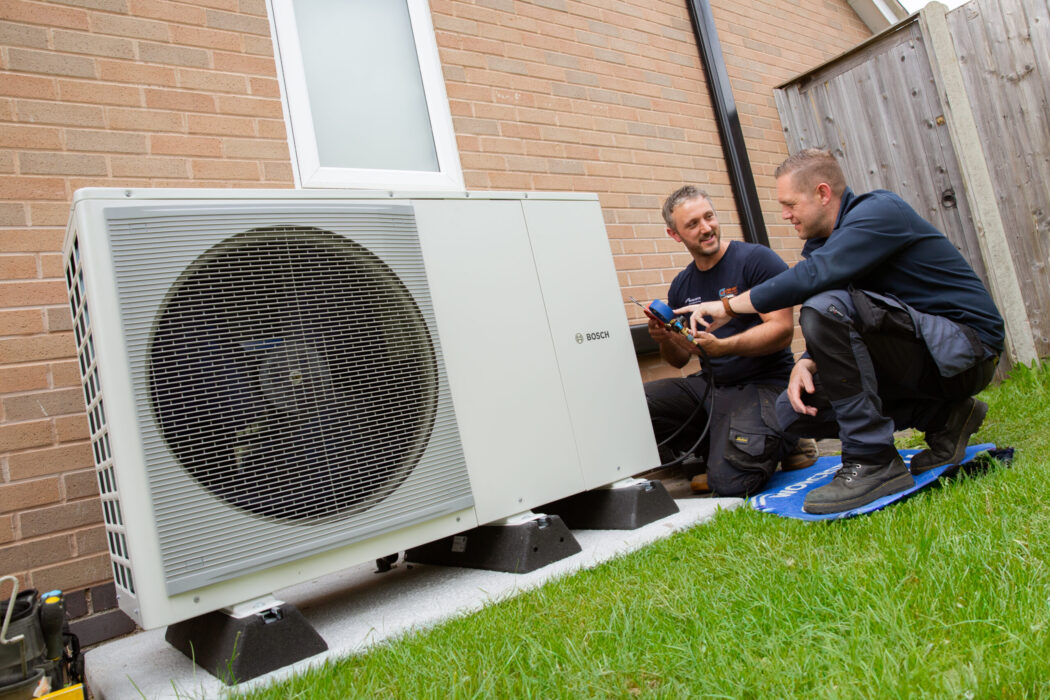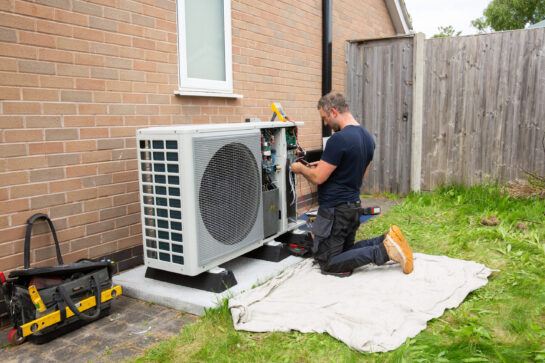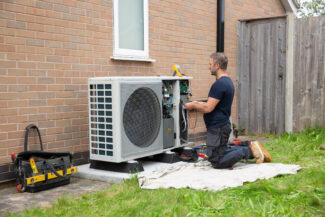
How to Reduce Carbon Emissions and Your Carbon Footprint at Home
How can I reduce my carbon footprint at home? The options open to us as individuals are plentiful, from reducing water usage, adopting a plant based diet and using more energy efficient appliances, there really is something that we can all do to play our part.
But one key area where we can make significant improvements at home is in our heating. Having a good understanding of your heating controls, what you use to heat your home and the energy provider you select are key for cutting carbon emissions and costs.
The Power of Heating Controls: A Simple Solution for Big Impact
Heating controls are one of the easiest and cost-effective ways to reduce emissions at home. In fact, a recent study showed that using smart thermostats, timers, and zoning controls can significantly lower energy usage, by ensuring you only heat rooms when needed and at the right temperature.
This makes total sense, why would you choose to heat your entire home when you’re only using a couple of rooms? Optimising your heating system will allow you to reduce the amount of energy wasted, and smart thermostats can allow you to remotely control your heating and monitor your energy use in real time making sure you are always keeping on top of actual usage.
Implementing this one simple change can lead to savings of up to 10% on energy bills and lessen your carbon footprint. It’s effortless really, and shouldn’t impact on your comfort.

Gas Boilers vs. Air-Source Heat Pumps: The Carbon Emission Battle
So we know we can make a difference by implementing a really small change like mastering your heating controls and making smart decisions about which rooms you heat and when.
However, considering that 20% of an average UK household’s carbon footprint comes from its heating and electricity, there is room to bring this down even more by looking at the way we actually heat our homes, either using a more traditional gas boiler or a ASHP (Air-Source Heat Pump), a much greener option.
Let’s take a look at the difference between both options.
Gas Boilers:
Gas boilers have long been the traditional choice for home heating in the UK. However, they are a significant source of carbon emissions. Burning natural gas produces carbon dioxide (CO2), a primary greenhouse gas that contributes to global warming. The average gas boiler emits about 2.7 tons of CO2 per year. Although modern gas boilers are more efficient than their predecessors, they still heavily rely on fossil fuels, which are finite and environmentally damaging.
Air-Source Heat Pumps (ASHP):
In contrast, ASHPs are a much greener option. According to a recent study, ASHPs emit up to 95% fewer carbon emissions than gas boilers. How? ASHPs take heat from the outside air (even in cold temperatures) and convert it into energy to heat your home. The electricity that powers ASHPs can come from renewable sources like wind or solar power, making them an incredibly eco-friendly choice.
ASHPs do come with a higher upfront cost but government incentives and lower running costs make them a viable, long-term solution for anyone serious about reducing their home’s carbon emissions and may make a good choice next time you have to replace your conventional gas boiler.
Find out more

How to Measure Your Carbon Emissions
Wanting to reduce your carbon footprint and household emissions is a noble cause, but just how do you measure the amount you’re currently emitting, and what should you aim to get to in order to make a real difference? Especially when it’s reported that the average UK household emits 13 tonnes of carbon emissions per year per person.
Reducing carbon emissions is high on the government’s agenda and the UK’s Climate Change Committee (CCC) suggests that to meet the country’s 2050 net-zero target, the average carbon footprint per person needs to drop to about 2-3 tonnes per year.
To get a benchmark of the amount of carbon emissions your home is emitting, you can use a useful online carbon calculator and recheck regularly as you make changes to track your progress.
The Role of providers: Are They As Green As You Think?
So, you’ve optimised your heating system, and replaced your conventional gas boiler with an ASHP. What next?
Well, your energy provider plays a huge role in your carbon footprint as well, and the UK energy market has seen a growing number of companies that offer energy from renewable sources like wind, solar, and hydropower.
However, not all energy providers are created equal and many still rely heavily on fossil fuels to generate electricity.
The UK’s “Big Six” energy companies—British Gas, EDF Energy, E.ON UK, npower, ScottishPower, and SSE still dominate the market, but they vary in terms of their renewable energy commitments. Some are transitioning towards more sustainable practices, while others continue to source a significant portion of their energy from gas and coal.
One energy company that walks the walk when it comes to renewable energy is Octopus energy, a company that we highly recommend. Their commitment to move to net zero is commendable and has earned them multiple awards including the Which Eco Provider award in 2023 and the Uswitch supplier of the year winner in 2018, 20, 21, 23 and 2024.


How to Choose a Sustainable Energy Provider
Before signing up with any energy provider you’ll need to do your research and find out how green their energy supply really is. Here’s what to look out for to make sure your next energy provider is as committed as you are:
Check their fuel mix:
In the UK, energy companies are required to publish their fuel mix every year, which shows what percentage of their electricity comes from renewable sources. You can often find this information on their website.
Look for certifications:
The Renewable Energy Guarantee of Origin (REGO) scheme certifies that the electricity supplied comes from renewable sources. Look for providers who have REGO certificates.
Sustainability reports:
Some companies publish detailed sustainability reports outlining their environmental goals and performance. If sustainability is important to you, these reports can give you a clear picture of where the company stands.
Customer reviews:
Many comparison sites now include reviews on how green an energy provider is. Platforms like Trustpilot or Which? can be great resources for getting customer feedback on a company’s sustainability efforts.
By switching to a greener energy provider, you can significantly reduce your carbon emissions without having to make any changes to your home setup. It’s one of the easiest and most impactful steps you can take in your journey toward sustainability.
Conclusion: Small Changes, Big Impact
Reducing your carbon footprint at home doesn’t have to be difficult. By investing in smarter heating controls, considering greener heating systems like ASHP, measuring your carbon emissions, and choosing a sustainable energy provider, you can make a huge difference for both the environment and your energy bills.
As consumers, we have more power than ever to drive change in the energy market. Every choice, from the appliances we use to the providers we choose, can either contribute to the problem or help us be part of the solution. The shift toward sustainability starts at home, and it starts with you.
If you’re interested in making some changes towards a more carbon efficient home, Custom Heat offers Air Source Heat Pumps installation, get in touch with us to find out more.

